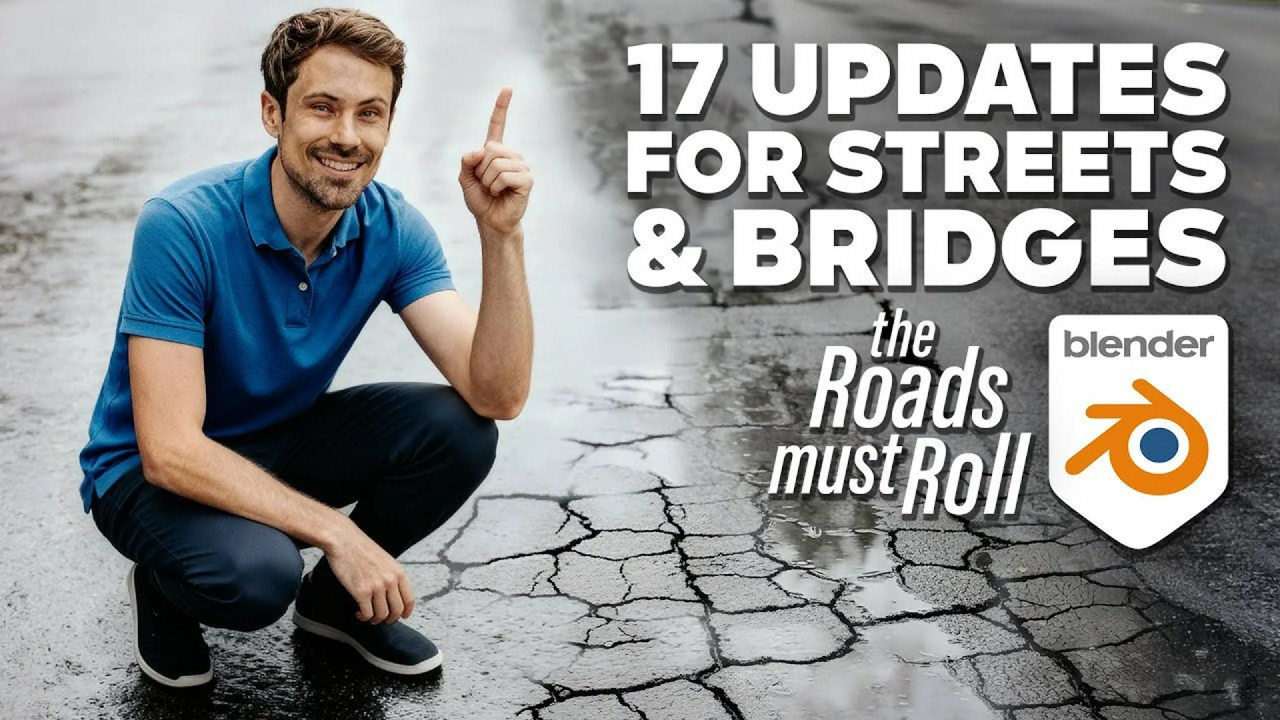Discover a powerful Blender workflow that seamlessly combines procedural textures with artistic texture painting. Create incredibly detailed and realistic materials with ease, blending efficiency with creative control for stunning 3D art.
In the world of 3D art, creating believable and intricate materials can be a daunting task. However, renowned Blender artist rileyb3d, known for his insightful tutorials and impressive renders, simplifies this process in his video “Finally: Texture Painting in Blender Made Simple.” This comprehensive guide unveils a hybrid texturing workflow that merges the efficiency of procedural generation with the artistic control of texture painting, empowering creators to achieve stunning results.
The Hybrid Texturing Advantage
The core of rileyb3d’s method lies in building a robust procedural foundation before diving into painting. This involves setting up basic materials using image textures for color and roughness, then layering them to achieve initial complexity. The beauty of this approach, as the creator demonstrates, is that the underlying procedural setup remains fully adjustable, allowing for non-destructive edits even after painting.
Master the Mix Shader for Precise Control
A crucial technique highlighted by rileyb3d is the use of a Mix Shader node. Here’s how it works:
- Two Principled BSDFs: Connect two separate Principled BSDF shaders (representing different material properties) to a Mix Shader.
- Blank Image as Factor: A blank image texture serves as the factor input for the Mix Shader.
- Texture Paint Mode: Switch to Blender’s texture paint mode and paint directly onto this blank image. Where you paint, one material will show through; where you don’t, the other will. This provides incredibly precise control over material blending.
Elevate Your Painting with Proper Brush Settings
For optimal results, the artist emphasizes the importance of brush settings. He strongly recommends using a pen display like a Wacom tablet for its pressure sensitivity. This allows for softer, more natural strokes and seamless blending. Key settings to enable include:
- Pen Pressure for Strength: This gives you dynamic control over the intensity of your paint.
- Texture Masks: Experiment with options like “view plane,” “random,” and “stencil” to introduce organic variation and subtle details into your brush strokes.
Adding Depth with Normal Details
Beyond color and roughness, the video shows how to incorporate normal details. By using your painted texture to drive a Bump Node, you can simulate carved effects, worn edges, or subtle surface imperfections. This adds another layer of realism, making your materials truly pop.
Enhance Workflow with Fluent Materializer
While the core techniques work with vanilla Blender, the tutorial also introduces the Fluent Materializer add-on. This powerful tool offers procedural edge masks that can be effortlessly mixed with your painted layers, further enriching the detail and realism of your textures. The workflow is then applied to both wood and fabric materials, demonstrating its versatility.
Essential Tips and Final Thoughts
Throughout the tutorial, rileyb3d stresses the importance of saving your painted textures regularly. Additionally, organizing your node setups using grouping is recommended for maintaining a clean and manageable workflow, especially for complex materials.
It’s fascinating how Blender’s node-based material system provides such a flexible and powerful canvas for artists like rileyb3d to innovate. The ability to non-destructively blend complex procedural effects with the organic touch of hand-painting truly showcases the software’s versatility and the creator’s mastery in leveraging it. Many professional 3D artists, whether creating environments, characters, or product visualizations, rely on a similar hybrid approach to achieve photorealistic results efficiently.
This approach to texture painting in Blender truly demystifies the process, making it accessible for artists of all levels. By combining the strengths of procedural and hand-painted techniques, he empowers creators to focus on the artistic aspects, rather than getting bogged down in technical complexities. This method, whether used with just Blender’s built-in features or enhanced with powerful add-ons, is a game-changer for anyone looking to create realistic and detailed 3D assets.
Source:
rileyb3d – Finally: Texture Painting in Blender Made Simple



